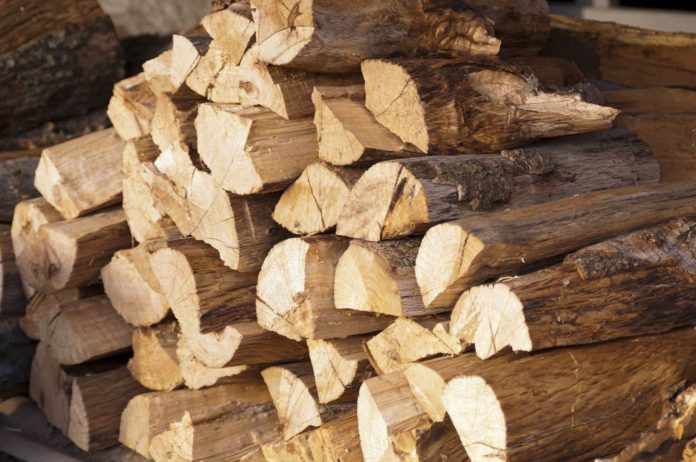When winter starts setting in, you may start to worry about winter pests coming into your home. You’ve noticed a lot of pests like to take refuge in your firewood, and you’re tired of those pests ending up in your home. It’s time to figure out how to change that.
If you need tips for preventing pests in your firewood storage this winter, you’ve come to the right place. You’ve had to deal with firewood pests enough already. These tips will help change your firewood storage and keep your home and family safe from pests this winter. All it takes is a few little changes.
Best Pest Control Firewood Storage Tips
Store Firewood Away from Your Home
One of the biggest reasons people find more pests in their home during the winter is that they’ve piled their firewood against their house. Firewood naturally attracts pests, particularly insects, because they like to eat or live inside the wood. So when it’s piled right against your home, pests will take up residence in the firewood and eventually find their way into your home.
Some people also choose to store their firewood inside their house instead of outside. But doing so literally invites pests into your home. You might think that, since the wood was just cut and dried, there are no pests in it yet. But pests live in trees even before they are cut down, so there’s a good chance some pests are still living in the wood even after it’s dry.
This is probably the easiest and best pest control tip on this list – just stack the firewood away from your home. A good rule of thumb is to stack it a good 20 feet from any building. That way, when pests decide your woodpile is a good place to live, they won’t be near your home.
Keep Firewood Stored Above the Ground
Another one of the best pest control tips for firewood storage is to store your wood on a rack or shelf. Sure, it might be easier to toss the wood on the ground and stack it from there. But a lot of pests, such as subterranean termites, gain access to wood from the ground. And those are not pests you want in your home.
It’s also a good idea to store the firewood over cement or asphalt. The stone creates an added barrier between your wood and the pests that live in the ground. The pests won’t be as attracted to the wood if they are blocked from the ground.
The combination of putting your firewood on a rack over cement or asphalt should help minimize the number of pests getting into your firewood in the first place. Of course, there will still be some pests in the wood. Some might have been living in the wood before you cut or purchased it. But keeping the wood away from the ground will make a big difference in the number of pests you have in your firewood overall.
Cover Your Firewood
Pests are generally attracted to wood, but damp or rotting wood will attract them much more than dry wood will. Stacking your wood on a rack or shelf will help keep your wood dry. You can also purchase a tarp or cover to put over your wood for the winter.
Whatever kind of cover you use, the last thing you want is snow sitting on your firewood all winter. The wood will soak in the water, which will make it hard to burn and will attract more pests to your woodpile. Putting a cover over the wood will limit the amount of water that can touch the wood and protect it from water damage and pests.
Use the Oldest Wood First
Sometimes the easiest thing is not the best. A lot of people like to stack their new wood on the top of their woodpile, and then they take the firewood from the top when they need to put some wood on their fire.
The problem with this is that the wood at the bottom of the stack never gets used. And as the wood ages, it becomes more of a target for pests. It seems like a nice place to not be disturbed, and most pests don’t want to be disturbed in their homes. Plus, older wood is more likely to start rotting, and pests love rotting wood.
So when you add firewood to your woodpile, shift the pile so the oldest wood is on top and the newest is on the bottom. This may not be the easiest way to stack wood initially, but it’s the easiest way to make sure that the oldest wood is being used. It also ensures that no wood gets wasted because of rot.
Burn Your Firewood Immediately
When you do take your firewood inside your home, burn it immediately. Don’t put a little stack next to the fire, even if it is the most convenient way to keep adding wood to the fire. The firewood may have pests in it that will be drawn out of the wood by the warmth of your home before they end up in the fire.
You may not like having to constantly walk outside for more firewood, but if you want to keep pests out of your home, it’s one of the best pest control options on the list. To minimize how often you need to walk outside, try building the fire as big as you safely can each time you add wood. Doing so should help the fire burn longer without you needing to feed it every few minutes.
Don’t Spray Your Wood with Pesticide
You may be wondering if spraying your wood with pesticide is a good way to keep pests away from your firewood and your home this winter. While it might keep the pests away from the wood, spraying your wood with pesticide could turn into a dangerous situation for your family. When a pesticide is burned, it gives off harmful fumes that could get trapped in your home and make your family seriously ill.
But if you want to use some sort of pesticide to help get rid of your pest problem this winter, the best pest control option is to hire professionals to treat your home. They will not treat your firewood – again, that would be dangerous – but by treating your home, you should have fewer pest problems all winter.

















